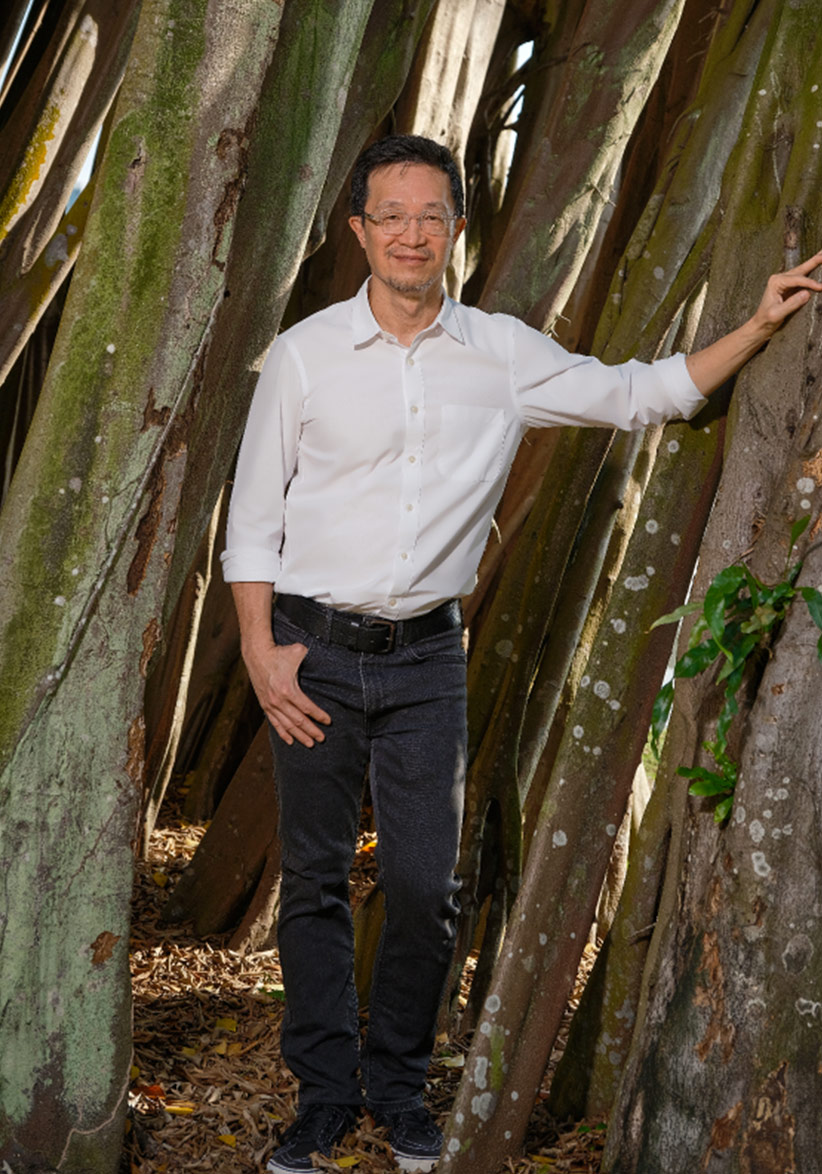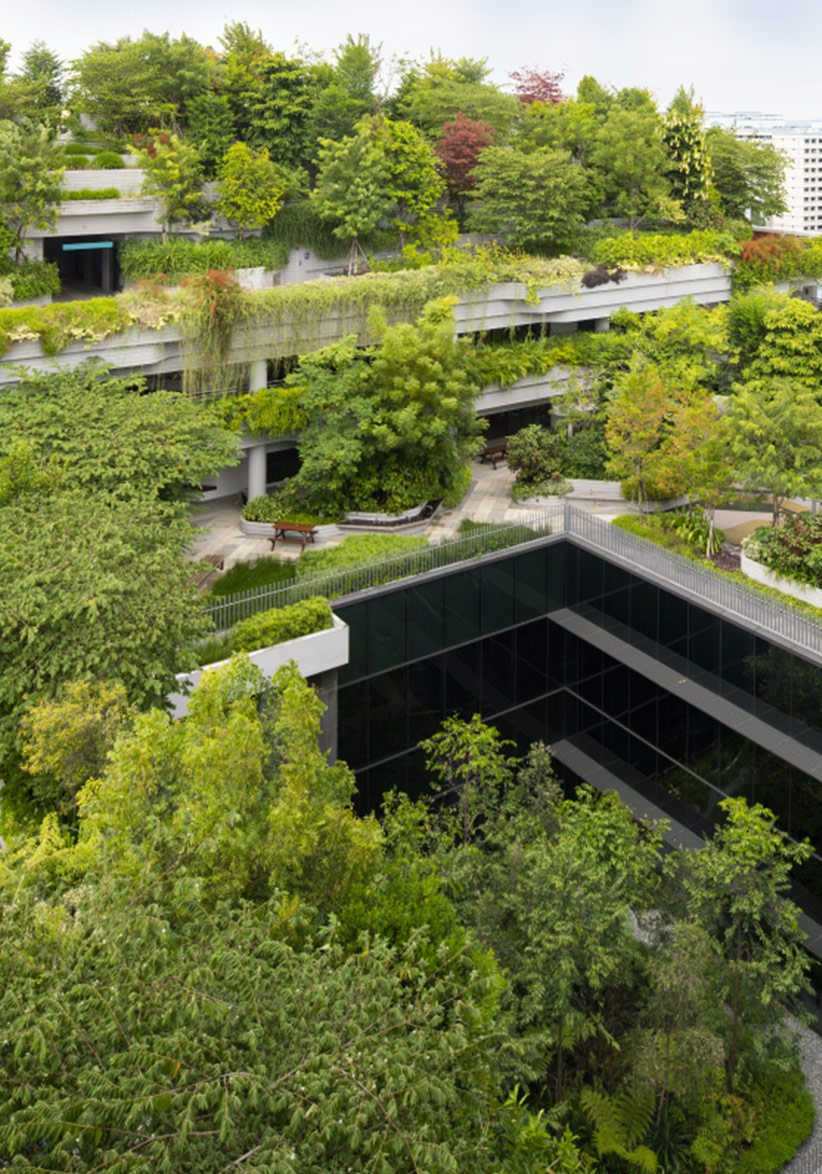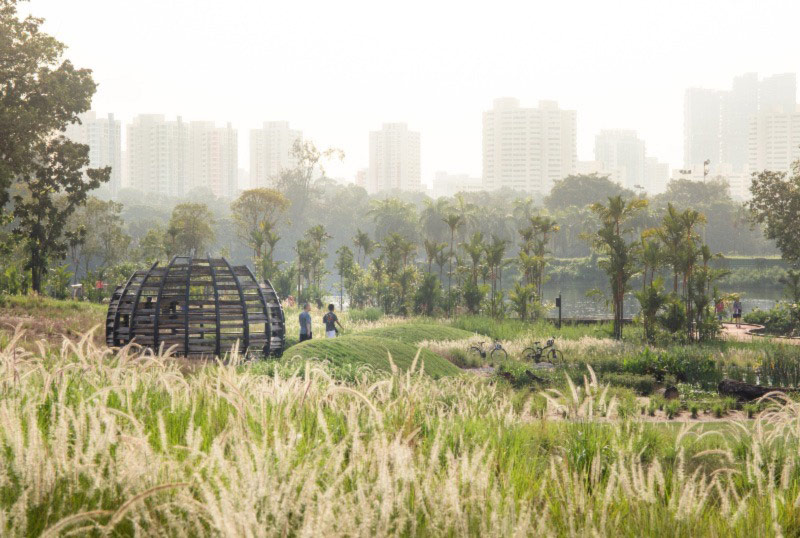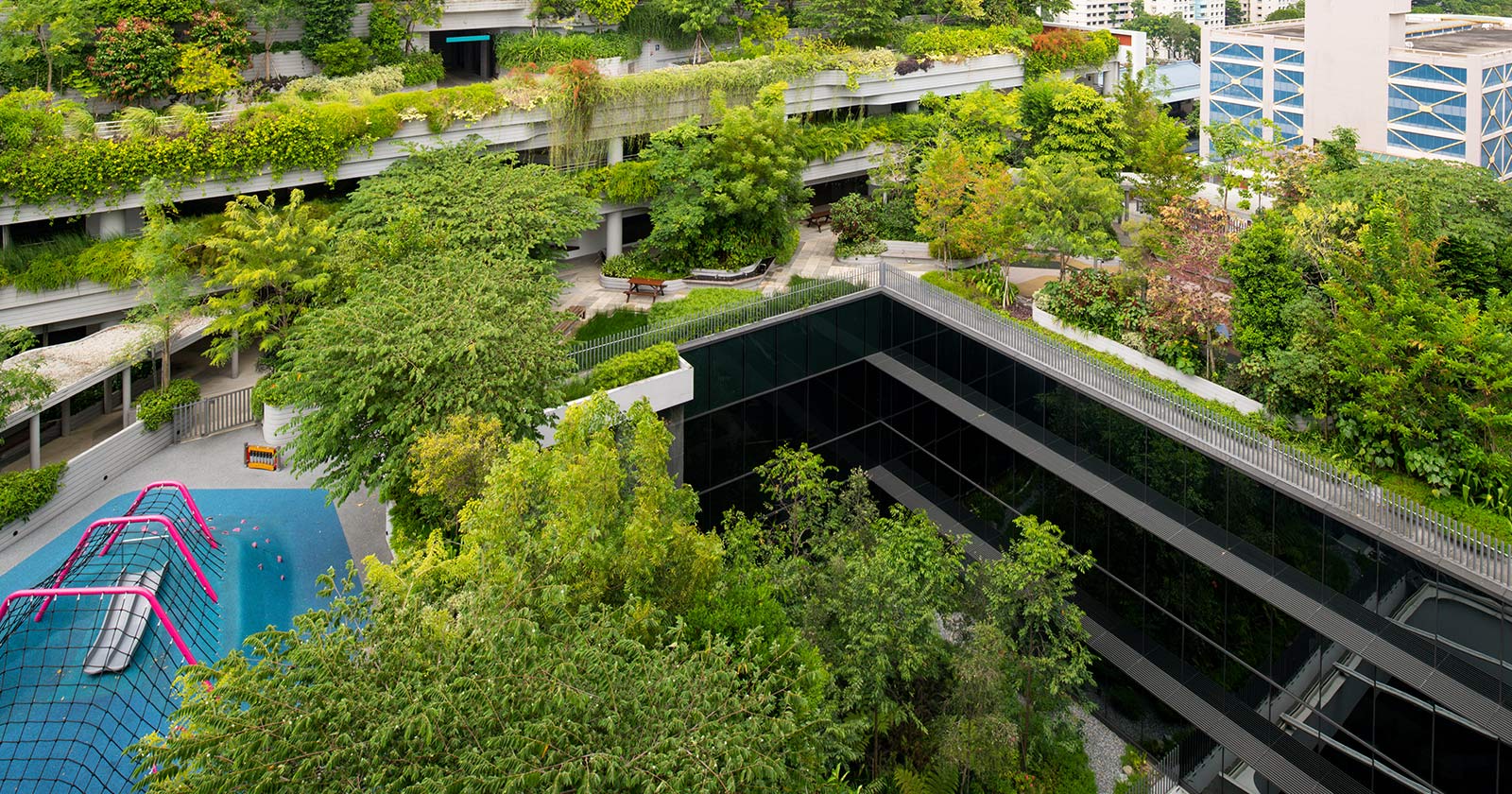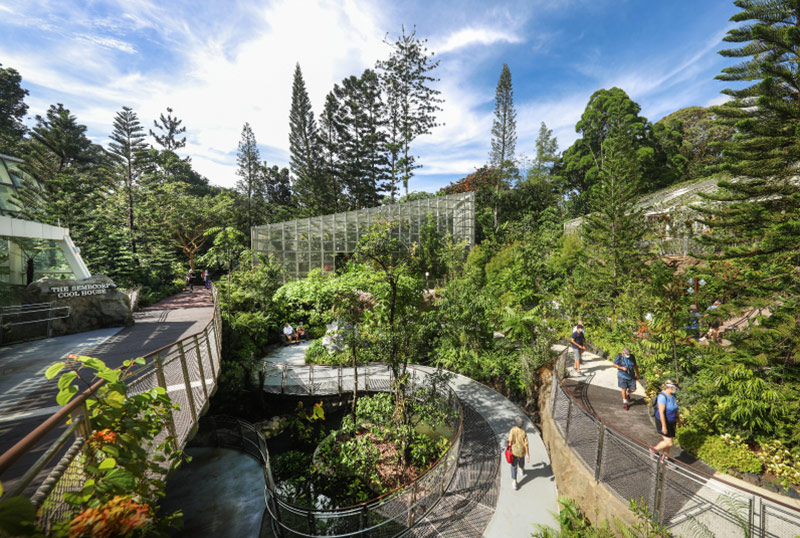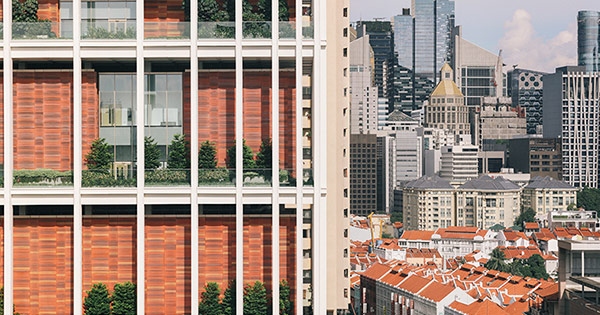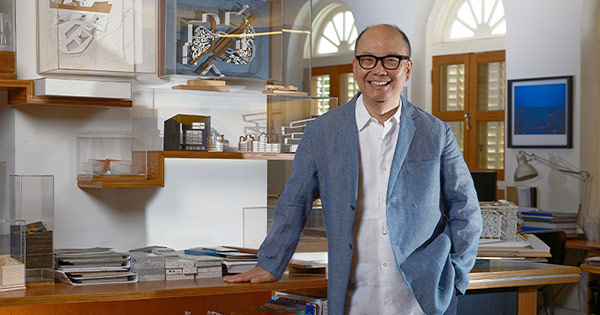DESIGNER OF THE YEAR 2023
Leonard Ng Keok Poh
Country Market Director
Henning Larsen, APAC
CONTACT
[email protected]
Anyone who has enjoyed the abundant return of otters and birds to Singapore’s parks and waterways must thank Leonard Ng. The landscape architect has played a pivotal role in transforming the city’s once functional drainage system into a thriving river of life. Starting from his contribution to the ground-breaking Bishan-Ang Mo Kio Park, Ng has been at the vanguard of integrating the reservoirs and canals in Singapore with parks and the urban environment to create new ecological and recreational assets for the city.
In his career spanning over two decades, Ng has also expanded Singapore’s ‘Garden City’ image with designs that balance the needs of humans, other species, and the environment. His ecologically based approach to parks and landscapes has resulted in green spaces that go beyond offering visual respite for people but also serve as welcoming environments to explore nature and wildlife habitats. They bring people and nature closer together while mitigating the growing effects of climate change and urbanisation – ultimately making the city more liveable and resilient.
Landscape design may have been Ng’s second career, but he has made a compelling case for why more should make it their first. His innovative designs have stretched the imagination of what landscape architecture can achieve. The scope and ambition of the designs redefine the traditional role of a landscape architect too. Ng is a pioneer in Singapore’s drive towards becoming a ‘City in Nature’ and continues to be a trailblazer in Singapore and beyond.
1LEONARD NG
(Photo by Ivan Loh)2BE LIKE WATER
Bishan-Ang Mo Kio Park (2012) was a breakthrough project for Ng and helped him develop the approach of “water as a driver in design”. This involves creating landscapes in the city to slow down, collect, and even treat water and runoff from storms, resulting in an urban environment that is more resilient and adaptable to climate change. The project received a P*DA Design of the Year in 2012.
(Photo by Henning Larsen, Shiang Han Lim)3DESIGNING WITH NATURE
Ng’s approach of connecting people with other species and the environment can be seen in his work on the revamped Lakeside Garden at Jurong Lake Gardens (2019). A bird hide located within grasslands allows visitors to observe the birds without disturbing them.
(Photo by Henning Larsen, Finbarr Fallon)4CITY IN NATURE
Ng believes landscaping can help create more spaces for nature even with increasing urbanisation. He led the landscape design for Kampung Admiralty (2017), a pioneering development in Singapore that integrates apartments and care facilities for seniors. The greenery insulates the rooftop and offers residents a space of respite. The carefully curated landscape has attracted rich biodiversity.
5GREEN IDENTITY
Beyond landscapes and parks, Ng has also designed some of Singapore’s best known green destinations. One example is the recently revamped National Orchid Garden (2021). Enhancements include an improved visitor experience, better circulation, and spaces to facilitate orchid naming and other events. The existing orchid nursery was also improved and a new Tropical Montane Orchidetum added.
(Photo by Finbarr Fallon)Insights from the Recipient
Leonard Ng (LN): I was trading currencies, stocks, and bonds and it was a stressful environment where most people didn’t stay for long. At the end of the day, you were measured by your balance sheet, which reset to zero every year. I did not want to continue working like that forever, so I started looking for something else.
I’ve always been interested in design. I enjoyed creating the interiors of the homes I’ve lived in over the years and thought of being an architect. But the runway to becoming qualified was quite long and I was already in my late thirties. I discovered Lincoln University from New Zealand was then offering a new part-time landscape architecture degree programme in Singapore, which I could take after office hours. While studying, I also began dabbling in the landscape design for my new house and I realised I really enjoyed the experience. It is probably because I developed a love for the outdoors while studying for my finance degree in Canada.
As I learnt more about landscape design, I saw a lot of potential in the field too. Beyond just aesthetics, it’s about creating environments that inspire and tackle issues such as climate change, which was only just beginning to be discussed then.
LN: After graduating, I returned to Singapore to set up my own firm. I was working on various projects, including the front lawn of the New Majestic Hotel, when the German landscaping firm Atelier Dreiseitl asked if I could help set up their Singapore office. They had won a competition to redesign Bishan-Ang Mo Kio Park and my role in the project was to design the softscape for the park, including selecting the plant types and deciding how to use them.
I also worked closely with the firm’s hydraulic engineers to naturalise an existing concrete canal into a meandering river. The project demonstrated to Singaporeans how a drainage system can be multifunctional. It can drain water and alleviate floods, but also be a surface for play when it is not full and even a space for nature to flourish.
Coincidentally, my post-graduate thesis at the Architectural Association was about how to incorporate water systems into urban environments. I was also then working on a hotel project in Lijiang, China, where I learnt about its ancient water supply system that brings people together with nature. Together, these experiences helped me to understand the importance of incorporating water seamlessly into a landscape and making it a visible part of a city’s design.
LN: A successful park is one that is multifunctional. The park must work not just visually but also at the engineering level so it is adaptable and resilient to climate change. It must engage multiple user groups – not just the young, but also seniors, families, and all demographics. It must be a space where humans and nature can coexist, too. Finally, it must be a compelling space where people will want to return to build memories.
Lakeside Garden is one example of a biophilic environment that helps to manage stormwater flows while enriching nature and the human experience of it. Our rendering for the design competition showed a flock of birds flying over the park and that is exactly what you can see when you visit it today. It was all by design. We made sure we provided different elements to create a place where birds can feed, roost, and raise their young. For instance, we planted grasslands of Chinese Fountain Grass (Pennisetum alopecuroides) to feed the Munia birds. There are trees of different heights for birds like raptors to perch on. There is even a separate island for the Grey Heron to feel secure enough to roost.
Our design also balances these spaces for nature with human needs so that visitors can reflect on their relationship with nature. A meandering boardwalk allows visitors to see the birds without intruding on them. There is also a playground with animal-inspired equipment that educates children about the wildlife in the park. Finally, we created a tree sculpture made from iron reinforcement bars salvaged from the park’s old pathways, which encourages visitors to take pictures and build memories of the park.
LN: As the city gets denser, we need to find more spaces for nature. For example, there is a large expanse of roofs in Singapore that contributes to the urban heat island effect. How could we soften these surfaces with landscape to improve thermal comfort?
Another big topic is how we could use landscape to change mindsets about nature. Many people want landscapes but their relationship with these areas can be very transactional in that they want to gain something but not take ownership. Just consider how much litter you see in our parks. Whenever there is a conflict with nature, it suffers first. We often hear calls to cull the otters, crows, and wild boars when they encroach on our spaces. But we should be looking at how we can design landscapes so that these conflicts can be better managed.
LN: I believe we must continue to push for landscape architecture to have an equal footing with other design professions. Architects and engineers have their own governing bodies and can sign off on their designs. Landscape architects should be able to as well, because the scale and impact of our work is significant.
We should also make landscaping an attractive profession so that we draw in the very best talents. That is one of the reasons why I applied to the P*DA. I want to show future generations that landscape design is a respectable profession, and we can stand up to be counted just like everyone else.
Citation
Jury Citation
Nominator Citation
Associate Professor Yun Hye Hwang
Department of Architecture
College of Design and Engineering
National University of Singapore (NUS)
Leonard Ng Keok Poh is a visionary leader in landscape architecture who is a champion for nature, having created large-scale green public spaces that are beautiful, liveable, and thriving.
From Bishan-Ang Mo Kio Park to Kampung Admiralty to Jurong Lake Gardens, Ng’s body of work has shaped many of Singapore’s iconic parks and landscapes, touching the lives of Singaporeans across different ages and socio-economic backgrounds. During the pandemic, these green spaces provided much-valued retreat and respite for citizens, offering ways for people to access nature in order to heal and sustain wellbeing. Ng has extended the nation’s ‘Garden City’ legacy such that the city is immersed in nature, not just on the ground plane but also vertically with greenery that thrives on buildings.
The Jury recognises the tremendous amount of dedication that sees visions achieve fruition, as well as Ng’s ability to influence and inspire stakeholders across multiple agencies and groups toward a shared vision, encompassing those who may not have a voice such as otters and birds.
The Jury commends Ng on his passionate and selfless journey to elevate the status and perception of the discipline, illuminating the way forward for future landscape architects. He continues to push boundaries to further the narrative and vision for Singapore as a ‘City in Nature’, imagining a city in deep harmony with nature.
I am pleased to write a letter of support for Leonard Ng, the Regional Director (Asia Pacific) of Ramboll Studio Dreiseitl (RSD) Singapore [now Country Market Director, Henning Larsen, APAC]. I have collaborated with Leonard on two research projects: “Short-term Vegetation Changes in Tropical Urban Parks” (2017-2020) and “Nature, Place and People: Forging Connections Through Neighbourhood Landscape Design” (2018). He has also been involved in teaching NUS students – as a tutor (2013) and a guest critic (since 2011) – in multiple design studios for the NUS Master of Landscape Architecture programme.
Leonard is active in innovative practice and project collaborations with multidisciplinary approaches. His clear leadership helped establish RSD’s reputation as one of the best landscape architecture firms in Singapore. He advocates an extended role for landscape architecture in response to worldwide environmental crises, including biodiversity loss and climate change. His forte is the powerful transformation of the landscape architecture profession uniquely grounded in local and regional sustainability issues.
I fully support his application for the President*s Design Award Designer of the Year 2023. I have confidence that his significant influence on reshaping the field of landscape architecture will go beyond Singapore and the Global South.

